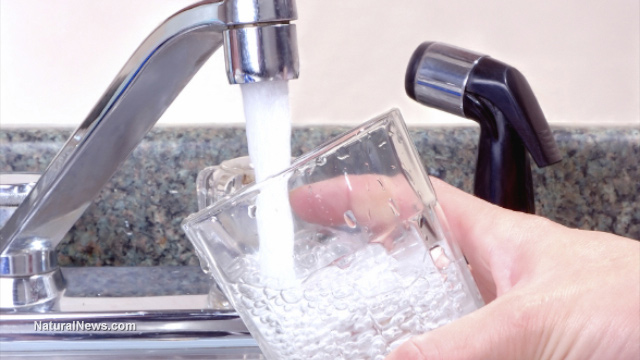Is the water you’re drinking linked to causing heart attacks and cancer?
02/17/2017 / By Lance D Johnson

Water chlorination has been the cheapest method of disinfection for over a century. Chlorine efficiently disinfects large quantities of water. It is generally used to prevent outbreaks such as salmonella, and can even inactivate the human norovirus. For these reasons, the EPA classifies chlorine as a pesticide.
Even though chlorine is an effective pesticide, on a grand scale, it is hard to measure how quickly microorganisms learn to evolve and resist the persistent use of this chemical. Could widespread dependence on chlorine contribute to accelerated microbial resistance?
Chlorine byproducts cause free radical damage to cells
There’s another pervasive problem with widespread chlorine treatment of water and it’s much easier to measure. Cl- combines with other biological compounds in the water to create byproducts called trihalomethanes (THMs). These THMs readily enter the body through the water supply and inflict harm on the cellular level, interrupting the necessary functions of cells. Therefore, THMs are linked to several health problems, including hardening of the arteries, nervous system disorders, birth defects, and various forms of cancer. The U.S. Council of Environmental Quality warns that cancer risk can be 93 percent greater for those who drink chlorinated water compared to those who have their water filtered.
A study conducted in the Hartford Connecticut area found that women with breast cancer harbored 50 percent higher THM levels in their breast tissue. As THMs enter the body, they cause free radical damage to the cells. This creates the perfect conditions for cancer to develop. (RELATED: For more information on cancer prevention, visit CancerSolutions.News)

Digging deeper, chlorine and its byproducts are linked to the hardening of arteries in animals. While most medical diagnostics focus on cholesterol levels, there could be a far greater issue heightening people’s risk for stroke and heart attack. The 1960’s book, “Coronaries Cholesterol Chlorine” by Dr. Joseph Price, reports on another forgotten factor that causes hardening of arteries. When chickens were exposed to chlorinated water, their circulatory health deteriorated, leading to visible shivering, feather drooping, and lethargy. Animals that weren’t exposed to chlorine showed no circulatory damage and had better growth rates.
Hot showers are practically toxic chlorine gas chambers
The problem with chlorine doesn’t end at the tap. Every time you take a shower, you are likely breathing in the toxic byproducts of chlorine. The hot shower that steams up the bathroom mirror is also gassing up your lungs with THMs, intoxicating your blood with carcinogenic compounds. Some estimates purport that the hot steam contains 50 times more chemicals than cold drinking water. There’s literally a gas chamber in every modern home, a place where families are readily poisoned. A 2006 Turkish study concluded that “chlorine gas is a potent pulmonary irritant that causes acute damage in both the upper and lower respiratory tract.” Thankfully, there are specific showers filters that control this.
Chlorine is one way to disinfect water, but the long term consequences of exposing the body to this pesticide are often ignored. As water quality continues to decline, with pharmaceutical chemicals, birth control, herbicides, and pesticides intermixing, families and individuals should take their health seriously and invest in laboratory-validated water filtration systems. Activated charcoal water filters can adsorb a wide spectrum of contaminants, including THMs. At Water Filter Labs, the Big Berkey Water Purification System proved to be most effective for removing heavy metals. Additionally, company tests confirm that the system is efficient for removing a wide spectrum of byproducts, pharmaceuticals, THMs, and other pesticides.
Clean water should be the ultimate goal to preserve healthy cellular environments. While chlorine protects against harmful micro-organisms, it also weakens the cells of the human body, making individuals susceptible to more detrimental health problems.
Sources include:
Submit a correction >>
Tagged Under:
cancer, chlorine, heart disease, tap water, Trihalomethanes, water filtration
This article may contain statements that reflect the opinion of the author




















